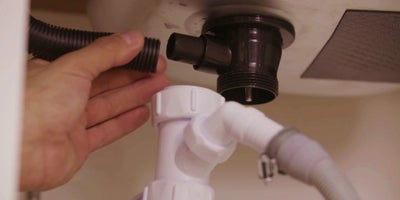They are making a few good pointers about 7 Ways To Fix A Slow-Draining Sink Before You Call A Plumber in general in this article which follows.

Introduction
We've all been there: You're cleaning your teeth or washing your hands, and you observe the water merging in the sink. Instead of promptly swirling away, it remains, turning your once-refreshing early morning routine right into a small swamp scene. A slow-draining sink isn't simply frustrating; it's usually an indication of larger pipes issues hiding under the surface area. The bright side is that most slow-draining sinks can be fixed with a little knowledge, a few basic devices, and some persistence. Prepared to tackle this task head-on? Allow's roll up our sleeves and dive right in.
Comprehending the Sources Of a Slow-Draining Sink
Before you begin poking around in your pipes, it aids to understand what might be triggering the stagnation. Comprehending the root cause makes it much easier to pick the best repair.
Common Wrongdoers Behind Slow Drain
So, what's obstructing things up? Typically, it's a mix of daily debris-- assume hair, soap scum, toothpaste residue, and leftover food particles. In time, these tiny bits gather and hold on to the pipe wall surfaces, progressively tightening the passage and making it harder for water to travel through. Sometimes, mineral deposits from tough water can additionally include in the crud, producing the perfect tornado for stubborn obstructions.
When is it Time to Take Action?
If you see the water draining slower than typical, it's a great idea to intervene quicker as opposed to later on. Waiting too long can cause finish clogs, unpleasant smells, or even pipeline damages. If the water takes more than a couple of seconds to clean out after turning off the faucet, consider it a red flag and get ready to put on your do it yourself hat.
Tools and Materials You'll Require
The right devices make all the difference. Luckily, you will not require a fully stocked plumbing's van to do the job.
Essential Tools for DIY Repair Works
A plunger is your best beginning factor. A tiny, sink-sized plunger produces suction that can dislodge minor blockages. For more consistent clogs, a drainpipe serpent (occasionally called a plumbing professional's auger) functions marvels. A pair of gloves, a flashlight, and perhaps a set of protective safety glasses are also handy.
Advised Cleaning Solutions
Moderate meal soap and warm water can assist break down greasy build-up. A combination of baking soda and vinegar is a time-tested home remedy, and enzymatic cleaners offer a more environment-friendly technique. Maintain chemical drainpipe cleaners as a last resource, as they can be rough on your pipes.
Safety And Security First: Preventative Measures and Preparations
Prior to you launch into unclogging setting, think of security. You're dealing with potentially filthy water and debris, so slip on a set of gloves. If you're making use of chemical cleansers, guarantee the area is well-ventilated and follow the directions on the tag.
Safety Equipment and Work Space Configuration
Put down some old towels or dustcloths around the sink location to catch sprinkles. Remove any things that may get in your means, like soap dispensers or toothbrush holders. Ensure you have excellent illumination-- get a flashlight if required.
Step-by-Step Overview to Taking Care Of a Slow-Draining Sink
Currently, allow's enter the nitty-gritty. This detailed procedure will certainly guide you via easy techniques to restore your sink's water drainage.
Action 1: Remove and Tidy the Stopper
Frequently, the stopper (that little plug you push down to obstruct water) is the initial perpetrator. Remove it thoroughly and wipe any kind of hair or substance caught around its base. Wash it thoroughly before putting it back in position.
Action 2: Utilize a Bettor to Remove Particles
Got that bettor ready? Position it over the drainpipe and provide it a couple of firm pumps. The idea is to create suction that can loosen up any blockage. If you see little bits of debris floating up, you get on the right track.
Step 3: Try a Drain Snake or Cord Wall Mount
If the bettor doesn't do the trick, it's time to draw out the drain snake. Carefully feed it right into the drainpipe and spin as you go. You could feel some resistance-- that's likely the clog. Keep turning and drawing till you remove the blockage. If you don't have a drainpipe snake, a corrected cable wall mount can work in a pinch.
Tip 4: Use a Do It Yourself Drainpipe Cleaner
A natural cleaner made from baking soft drink and vinegar can break down residual grime. Pour half a mug of cooking soft drink right into the drain, complied with by half a mug of vinegar. Allow it fizz for about 15 mins, after that flush with warm water. This chain reaction usually does marvels for minor blockages.
Tip 5: Rebuild and Check the Sink
Put whatever back together and run the tap. Does the water currently swirl away at a respectable speed? If yes, give on your own a pat on the back. Otherwise, do not misery-- there are still a few more dress up your sleeve.
Alternate Methods for Stubborn Clogs
Not all blockages are created equal. If your sink still declines to comply, take into consideration these different solutions.
Baking Soda and Vinegar Technique
We already touched on this, however it's worth keeping in mind once more. This gentle, environmentally friendly approach is much safer than chemical cleansers and frequently quite reliable.
Enzymatic Drain Cleansers
Enzyme-based cleansers use all-natural germs to digest organic matter. They're a superb option if you're aiming to prevent harsh chemicals. Just keep in mind, they might take a bit longer to work their magic.
Chemical Drain Cleaning Company: Pros and Cons
Chemical cleaners can blow up through tough blockages quick, but they're not without drawbacks. They can create heat and fumes, damage pipes if made use of exceedingly, and pose ecological dangers. Use them sparingly, and always follow the directions meticulously.
Safety Nets to Maintain Your Sink Flowing
Avoidance is the very best cure. By adopting a few easy routines, you can maintain your sink from reducing in the first place.
Routine Cleaning Behaviors
Wipe down the sink basin and fixture area on a regular basis. Remove hair or food fragments before they have a chance to wash down the drain.
Preventing Damaging Compounds Down The Tubes
Hesitate prior to disposing coffee grounds, oil, or fibrous vegetable scraps down the sink. These offenders cling to pipeline walls, developing clogs in time.
Routine Upkeep Checks
Arrange a fast month-to-month assessment. Run warm water via the sink for a few mins, paying attention to the circulation. If it appears slow, act quick before it comes to be a full-on obstruction.
When to Call an Expert Plumber
Sometimes, despite how hard you attempt, that clog simply won't move. That's when it's time to bring in the pros.
Indications That Suggest a More Severe Issue
If your sink drains pipes gradually regardless of multiple efforts, or if you notice water supporting in various other fixtures (like your shower or commode), you may have a much more serious pipes issue hiding deeper in the system.
Stabilizing Do It Yourself Initiatives with Specialist Help
While do it yourself can save you cash and offer a feeling of achievement, there's no pity in calling an expert. An expert plumbing professional can analyze your entire plumbing setup, guaranteeing there's no underlying damages or long-lasting problem that can cost you much more down the road.
Contrasting Expenses and Long-Term Solutions
Prior to making a decision, consider the big picture. An inexpensive, quick fix may address the problem briefly, however buying a much more long-term service might conserve you money and stress and anxiety in the long run.
Considering the Expenses of Do It Yourself vs. Professional Repairs
DIY repairs usually set you back little more than the price of a bettor or a bottle of cooking soda. Expert services, on the other hand, featured a price tag however might prevent repeated issues and costly repair services later.
Buying Top Quality Fixtures and Upgrades
If your sink's design adds to regular blockages, it might be worth updating to higher-quality fixtures or changing the plumbing design. Consider this an investment in your home's capability and comfort.
Final thought
A slow-draining sink can seem like a minor irritability, yet it's commonly an indication that your pipes requires a little tender loving care. By recognizing the root causes, employing the right tools and techniques, and devoting to easy preventive measures, you can keep your sink moving freely. And when all else fails, never ever hesitate to employ a specialist-- your home's plumbing is worth the investment in treatment and upkeep.
Three Common Ways to Fix a Slow Drain
Baking Soda Method
Boil a full pot of water. Measure out cup of baking soda and pour it down the drain. Then take cup of the magical cleansing substance known as white vinegar and drop that down there too. Allow the mixture to fizz in the drain for five minutes as the vinegar and baking soda combine. Now dump in that whole pot of boiling water. This combination of cleaning substances should clear out anything that is causing your sink to drain slowly. If it doesn t...
Zip-It
If the baking soda method doesn t clear out your drain, it may be because a significant amount of hair and/or other debris has collected there and you need to remove it. Purchase a Zip-It tool at any home improvement or hardware store and insert it into your drain. It will catch any collected hair or debris that s blocking the flow of water. Pull it out. If it s got a big clump of hair, etc. on the end, you ve probably got your culprit.
Drain Cleaner
If these methods don t work, there is the standard drain cleaner that you can also buy in a hardware store or even your local grocery store. It s better if you can use a household solution, but these drain cleaners often work in a pinch. They re very simple to use. You generally just dump them in your drain and wait. If even this method is not effective, it may be time to call the plumber.
https://www.mrrooter.com/oneida/about-us/blog/2017/july/three-common-ways-to-fix-a-slow-drain/

I hope you liked our section about Solved! How to Fix a Slow Sink Drain. Thanks a lot for taking the time to browse our content. Sharing is nice. Helping people is fun. I recognize the value of your readership.
Explore
 Alisan Porter Then & Now!
Alisan Porter Then & Now! Jenna Jameson Then & Now!
Jenna Jameson Then & Now! Sydney Simpson Then & Now!
Sydney Simpson Then & Now! Freddie Prinze Jr. Then & Now!
Freddie Prinze Jr. Then & Now! Kane Then & Now!
Kane Then & Now!